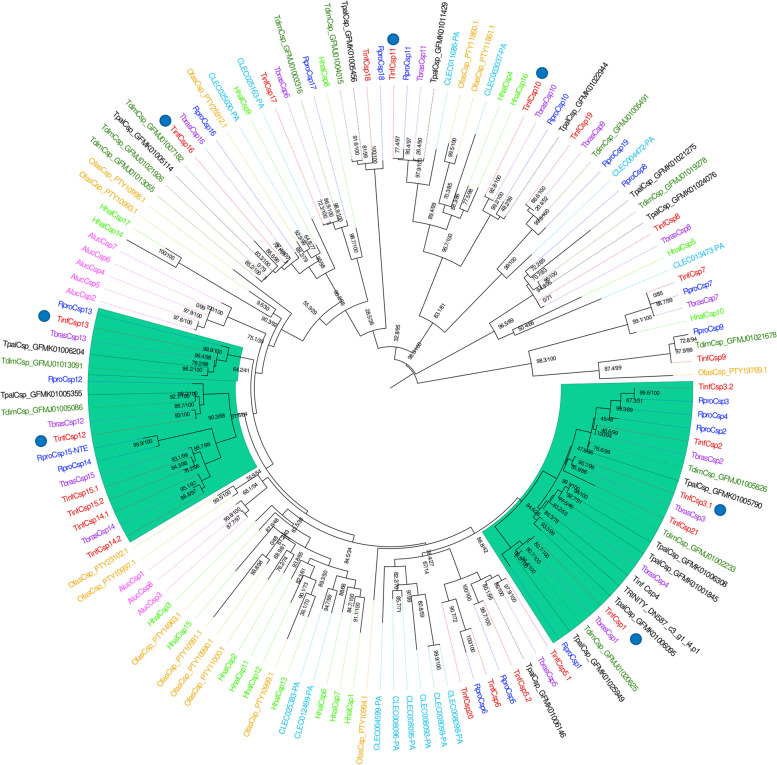Fig. 3.
Chemosensory proteins phylogenetic tree. The maximum-likelihood tree (rooted at the midpoint) was constructed using IQ-Tree and support values are shown for branches with both aLRT-SH and UFBoot values. Down and up-regulated transcripts after blood ingestion are marked with blue and red circles in the tree, respectively. Clades that are exclusive to triatomines are highlighted in green. Cimex lectularius and O. fasciatus maintained their VectorBase and NCBI codes, respectively. In the case of T. dimidiata and T. pallidipennis, sequences were identified using the contig IDs from databases where their CDS were obtained. Sequences from T. brasiliensis maintained the annotation proposed by Marchant et al. (2016) [38]. Aluc—Apolygus lucorum, Clec—Cimex lectularius, Hhal—Halyomorpha halys, Ofas—Oncopeltus fasciatus, Rpro - Rhodnius prolixus, Tbra—Triatoma brasiliensis, Tdim—Triatoma dimidiata, Tinf—Triatoma infestans and Tpal—Triatoma pallidipennis. Sequences with TRINITY IDs belong to T. infestans

